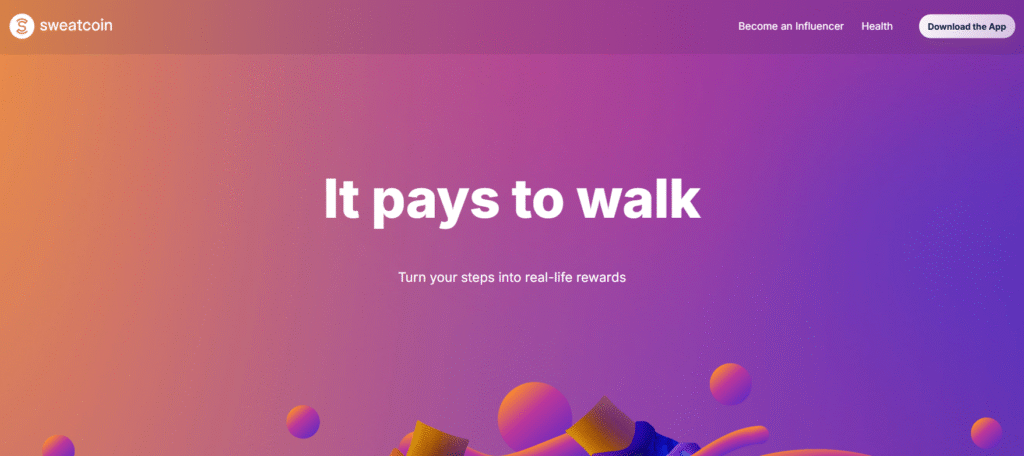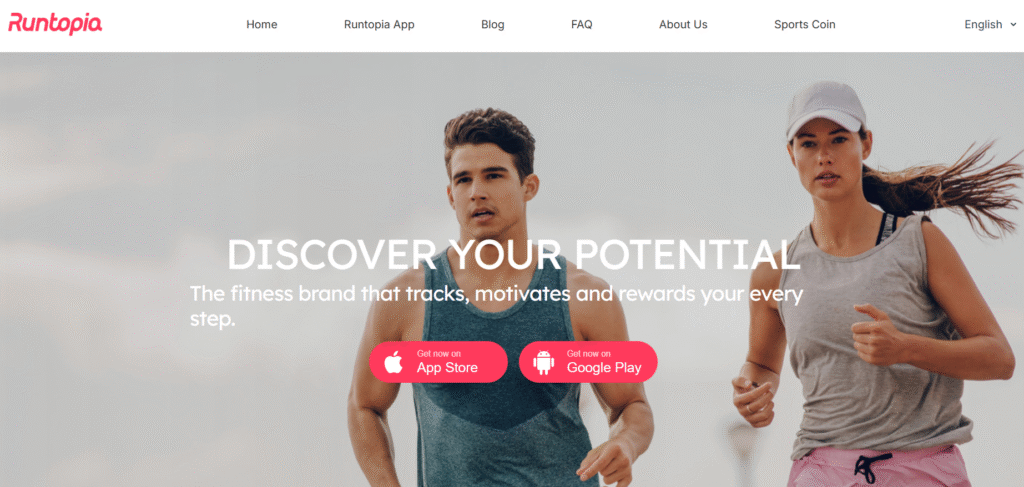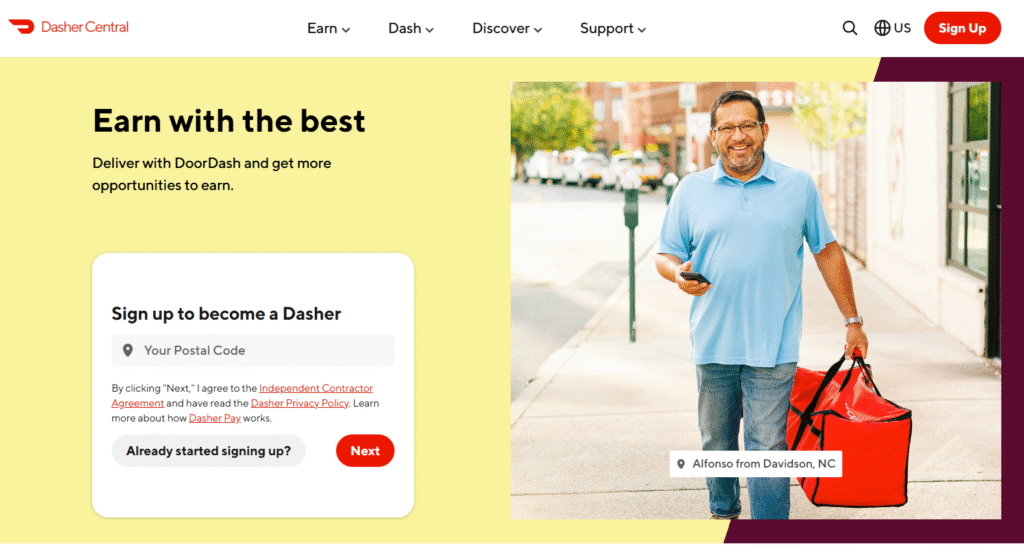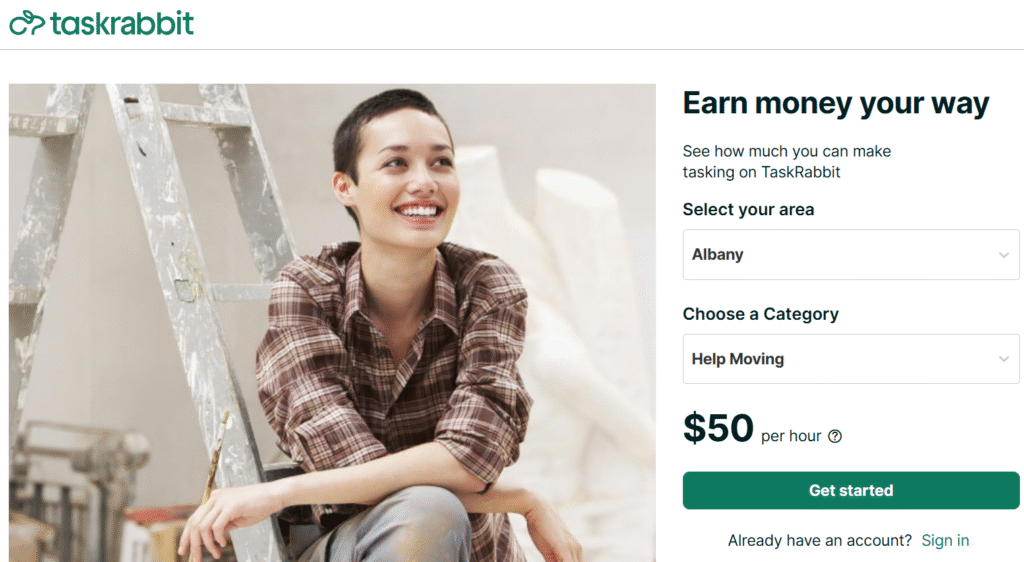Get Paid To Walk? I Tested These 17 Apps

Turning your daily stroll into actual cash? Yeah, I was sceptical too. Look, I’m a finance guy with a master’s degree. I’ve analysed investment portfolios and built retirement plans.
But when someone told me I could monetise my morning walk to grab coffee, I rolled my eyes. Hard.
It sounded like one of those “make $10,000 a month from your couch” scams that flood your inbox.
But here’s the thing, I tested it anyway. Over the last month, I downloaded 17 different apps and platforms, laced up my sneakers, and turned myself into a human guinea pig.
Some paid me in cash. Others gave me gift cards. A couple made me work harder than I expected. But every single one rewarded me for simply moving my body.
Want to know which ones actually delivered?
Let’s break down what works, what doesn’t, and whether your steps are worth cold, hard cash.
How Does It Work?
Before diving into the apps, it helps to understand why companies pay you to walk and it’s not charity.
Your steps have real value. Businesses, insurance companies, and health brands know that healthier people make better customers and employees.
Paying you to stay active benefits them too.
Most apps track your movement through your phone’s sensors or wearables like Fitbit or Apple Watch. Your steps then convert into points, coins, or money depending on the platform.
There are four main types of walking-for-cash apps:
- Step-Tracking Reward Apps (like Sweatcoin or Achievement) They record your daily steps and reward you with points you can redeem for gift cards, merchandise, or small cash. Some are generous, others require serious mileage for small rewards.
- Fitness Challenge Platforms (like StepBet, HealthyWage) You bet on yourself to hit fitness goals. Meet them and earn from the losers’ pool; miss them and lose your stake. It’s motivating but comes with risk.
- Delivery & Gig Apps (like DoorDash or Instacart) Not fitness apps, but they pay real money for jobs that involve lots of walking. You can earn $15–$30 per hour depending on location and effort.
- Pet Care Apps (like Rover, Wag) You get paid to walk dogs, stay active, and enjoy furry company. Perfect if you love animals.
Earning potential:
- Step-tracking apps: $20–$50/year (passive)
- Challenge apps: $100–$500/year (depending on discipline)
- Delivery/pet walking gigs: $15–$30/hour
I personally tested several of these apps from the hyped ones to obscure finds and discovered that while some are truly rewarding, others aren’t worth the phone storage.
17 Best Ways To Get Paid To Walk
I didn’t cherry-pick the easy winners here. I tested everything from the popular apps everyone raves about to the obscure platforms your neighbour’s cousin swears by.
Some impressed me. Others felt like a waste of time. Here’s my honest breakdown.
Apps That Pay You To Walk
These are the set-it-and-forget-it options. Download them, give permissions, and let them run while you live your life. No extra effort required beyond what you’re already doing.
1. Sweatcoin

Sweatcoin grabbed my attention first because everyone seems to have an opinion about it.
The concept is straightforward: walk outside, earn Sweatcoins, and trade them for rewards. The app uses your phone’s GPS and accelerometer to verify outdoor steps only.
Indoor walking doesn’t count, which annoyed me initially, but it makes sense from a fraud prevention standpoint.
After three weeks of consistent use, I accumulated about 300 Sweatcoins. That translated to a $10 Amazon gift card or some fitness gear discounts. Not exactly life-changing, but considering I did zero extra work, I’m not complaining.
The marketplace offers everything from electronics to fitness subscriptions to charitable donations.
The higher-tier rewards require thousands of coins, which means months or years of walking for premium items.
But if you’re patient and already walk regularly, the rewards add up passively.
One frustration? The app drains battery faster than I’d like. Some days, my phone died before lunch because Sweatcoin was constantly tracking my location.
Still, it’s free and requires no behaviour change, so the return-on-effort ratio is solid.
2. StepBet
This one scared me a bit. StepBet isn’t about passive rewards; it’s about accountability with financial consequences.
Here’s how it works. You join a game (they run constantly) and put real money into the pot, usually $40.
The app analyses your historical step data and sets personalized daily and weekly step goals.
Miss your targets too often, and you lose your stake. Hit them consistently, and you split the pot with other winners.
I joined a 6-week challenge and committed $40. My goals were 8,500 steps on “active” days and 10,000 steps twice per week. Sounds easy, right? It wasn’t.
There were rainy days, busy work days, and weekends when I just wanted to be lazy. But knowing I had $40 on the line pushed me out the door.
I completed the challenge and earned back $51.20. That’s an $11.20 profit for doing something I should’ve been doing anyway.
More importantly, it established a walking habit that lasted beyond the six weeks.
The psychological component here is brilliant. You’re not just earning money, you’re avoiding loss. And behavioural economics tells us loss aversion is a powerful motivator.
If you’re someone who needs external accountability, StepBet delivers.
3. HealthyWage
HealthyWage takes the betting concept further by focusing on weight loss rather than pure step count.
You set a weight loss goal, decide how much you’ll wager, and pick a timeline (6-18 months typically).
The platform calculates your potential payout based on the difficulty of your goal and your financial commitment.
The more aggressive your target and the more you bet, the higher your reward.
I watched a colleague commit to losing 30 pounds in 6 months with a $50/month bet.
Her potential payout? $1,200. She walked daily, adjusted her diet, and hit her goal. The check arrived two weeks after her final weigh-in.
Walking alone won’t win you HealthyWage challenges; you need comprehensive lifestyle changes.
But if you’re already planning to lose weight, this platform turns that intention into tangible financial motivation. The stakes are higher, but so are the rewards.
From a finance perspective, this is essentially an investment in yourself with a defined ROI.
You’re converting discipline into capital, which beats most savings account interest rates right now 🙂
4. PK Rewards
Most step apps count steps. PK Rewards measures effort, which is a game-changer.
The app tracks activity intensity, not just volume. A brisk 20-minute power walk earns more PK Coins than a leisurely 30-minute stroll. This rewards quality over quantity, which aligns better with actual fitness benefits.
I earned enough coins in three weeks to redeem a $10 Amazon gift card. The app also connects to your Apple Watch or fitness tracker, making tracking seamless.
No GPS drain, no battery issues, just passive monitoring that respects your phone’s resources.
The rewards catalog isn’t huge, but it’s practical, offering gift cards, workout gear, and electronics.
Nothing revolutionary, but everything you’d actually use. If you already do interval training or intense walking workouts, PK Rewards compensates you appropriately.
5. Runtopia

Runtopia markets itself as a comprehensive fitness app, and it delivers on that promise.
Beyond basic step tracking, it offers guided audio workouts, coaching programs, and training plans.
You earn Sports Coins for consistency, which redeem for athletic gear, PayPal cash, or workout upgrades.
I used it for two weeks and appreciated the coaching features more than the rewards. The app pushed me to increase intensity and distance gradually, which improved my fitness beyond what casual walking provided. The coins came as a nice bonus rather than the primary motivation.
Rewards accumulate slowly, expect several months before significant payouts.
But if you’re someone who wants a holistic fitness tool that happens to pay you, rather than a pure money-making app, Runtopia fits perfectly.
6. Achievement
Achievement is the lazy person’s walking app. I mean that as a compliment.
It connects to practically every fitness tracker, health app, and wearable you own.
Then it passively awards points for everything, steps, sleep, food logging, meditation, and even surveys about your health habits. Every 10,000 points equals $10 via PayPal.
I earned my first payout after about 6 months. That’s $20 annually if you’re consistent, which isn’t much. But here’s the beauty: it requires absolutely zero extra effort.
You’re already tracking these things. Achievement just pays you for data you’re generating anyway.
From a financial perspective, you’re monetizing a data asset you didn’t know had value. Companies pay for health behavior insights, and Achievement shares that revenue with users.
It’s passive income in its purest form.
7. Charity Miles
Not every walking app needs to line your pockets. Sometimes it feels better to help others.
Charity Miles donates money to your chosen charity based on your walking, running, or biking distance.
Corporate sponsors fund the donations, so you’re not paying anything; your activity generates charitable contributions automatically.
I selected a local animal shelter and logged 50 miles over three weeks.
That generated about $5 in donations, which isn’t massive but costs me nothing beyond what I was already doing.
If you’re motivated more by altruism than personal profit, this app transforms your fitness routine into philanthropy.
In Addoition, knowing your steps help others adds a psychological benefit that pure financial rewards don’t provide.
8. Miles App
Miles tracks all your movement, walking, biking, driving, flying, even trains and buses.
The genius here is the multiplier system. Walking and biking earn 10x the points that driving does, creating a financial incentive to choose eco-friendly transportation.
Every mode of transport generates rewards, but the app nudges you toward greener options.
I earned enough points in a month to redeem discounts at major retailers and restaurants.
The variety impressed me; everything from Target to Sephora to local coffee shops participated in the rewards program.
If you commute regularly or travel frequently, Miles captures value from movement you’d do regardless. It’s like a credit card rewards program, but for transportation instead of spending.
Get Paid To Walk Doing Deliveries Or Errands
Here’s where we transition from passive income to actual work. These platforms pay significantly more, but they require effort, time, and customer service skills.
Think of them as traditional side hustles that happen to involve lots of walking.
9. DoorDash

DoorDash dominates the food delivery market, and in walkable cities, you can dash entirely on foot.
I signed up, got approved within three days, and started accepting orders in my downtown neighbourhood.
My first week, I completed 12 deliveries over 8 hours and earned $127, including tips.
That’s nearly $16/hour for walking between restaurants and apartment buildings.
The key to profitability is cherry-picking orders. I rejected deliveries over half a mile or those with low base pay.
This kept my earnings per hour high and my walking distance manageable.
Some dashers make $20-25/hour during peak times by clustering orders efficiently.
Battery management becomes crucial. Constantly checking the app, using GPS, and communicating with customers drains your phone fast.
I invested in a portable charger, which paid for itself after two shifts.
From a financial planning perspective, delivery gigs offer immediate liquidity. You can cash out daily, making this ideal for urgent expenses or short-term income needs.
But remember, you’re trading time for money directly, unlike passive step-tracking apps.
10. Postmates
Postmates merged with Uber Eats, but the concept remains relevant for understanding how multi-category delivery works.
Unlike DoorDash’s food focus, Postmates handled everything: meals, groceries, alcohol, convenience store items, and even retail packages.
This variety meant more delivery opportunities and less downtime between orders.
Walking couriers in dense neighbourhoods could complete 3-4 deliveries per hour during busy periods, earning $15-20 hourly, including tips.
The flexibility to deliver diverse items meant you weren’t dependent on meal rush hours alone.
The merger changed some logistics, but the underlying principle persists: diverse delivery categories create more earning opportunities for walking couriers than food-only platforms.
11. Instacart
Instacart pays you to shop for and deliver groceries, which involves significant walking both inside stores and between delivery locations.
I completed full-service shopping, which means I selected items, checked out, and delivered them to customers.
A typical order took 45-60 minutes and paid $15-25, depending on order size and tips.
The walking component was intense; large grocery stores mean lots of steps, finding items, plus carrying bags to delivery addresses.
The earnings potential surprised me. Experienced shoppers who optimise their routes and shop efficiently can make $20-25/hour.
Weekend mornings are goldmines, families ordering groceries while you’re up early anyway.
The physical demands are real, though. Carrying multiple bags up apartment stairs is a full-body workout.
I tracked one Saturday shift at 12,000 steps over 4 hours, which burned more calories than any gym session. And I got paid for it.
12. TaskRabbit

TaskRabbit connects you with people who need help with random errands, many of which involve substantial walking.
I completed tasks ranging from picking up prescriptions to dropping off donations to standing in line for limited-release sneakers (seriously).
The variety kept things interesting, and setting my own rates meant I controlled my hourly earnings.
Walking-heavy tasks typically pay $20-30/hour depending on complexity. One client paid me $40 to walk their groceries home from Trader Joe’s because they’d overcommitted on shopping.
The easiest money I made that week.
The platform requires reliability and good communication, but if you enjoy variety and meeting different people, TaskRabbit turns your neighbourhood knowledge into revenue.
You’re essentially being paid to be helpful while getting exercise.
13. Gigwalk
Gigwalk offers micro-tasks that involve walking to specific locations to complete simple assignments.
Tasks include verifying product displays, photographing storefront signage, checking prices, confirming business hours, or documenting merchandising compliance.
Each gig pays $3-15 and takes 5-15 minutes typically.
I completed eight gigs in one afternoon while running personal errands anyway. Total earnings: $67 for maybe 90 minutes of actual work. The key is clustering nearby gigs to maximise efficiency.
This works best in urban areas with high gig density. Rural locations have fewer opportunities.
But if you live downtown or near major shopping districts, Gigwalk transforms your routine errands into profitable walking routes.
14. Amazon Flex
Amazon Flex technically requires a vehicle for most routes, but certain urban markets offer walking blocks for apartment-dense neighbourhoods.
These shifts involve delivering small packages within a compact geographic area. I completed one 2-hour block that paid $36 and involved delivering 18 packages within a six-block radius.
That’s $18/hour for brisk walking and efficient navigation.
Availability varies by city. Check your market to see if pedestrian routes exist.
The pay exceeds most passive walking apps, but you’re working a defined schedule with accountability for package delivery times and conditions.
Get Paid To Walk Dogs
Combining animal companionship with exercise while earning money? This category wins for pure enjoyment. If you love dogs, these platforms let you get paid for something you’d happily do for free.
15. Rover
Rover dominates the pet care marketplace, and dog walking is one of their core services.
I created a profile, passed the background check, and started getting walk requests within a week. My rate started at $20 per 30-minute walk and increased to $30 as I accumulated positive reviews.
The flexibility is unmatched. I walked dogs in the morning before work, during lunch breaks, and on weekends. Some weeks I did 2-3 walks; other weeks I did 15-20. It scaled to my schedule perfectly.
Regular clients developed quickly. Once owners trust you with their pets, repeat bookings become common. I had four regulars who booked me 3-5 times weekly, creating a predictable income that fit around my primary job.
From a financial perspective, dog walking offers high hourly rates with minimal overhead. No special equipment needed beyond comfortable shoes and maybe some treats.
The business scales as much as your schedule allows; some walkers turn this into six-figure full-time careers.
16. Wag
Wag operates similarly to Rover but emphasises on-demand walks over recurring bookings.
I appreciated the instant payment feature; funds cleared within 24 hours of completed walks. This made Wag ideal for immediate cash needs rather than waiting for weekly payouts.
The app’s built-in GPS tracking and photo updates created transparency that owners loved.
Every walk generated a report card showing the route, distance, duration, and photos of their happy pup. These features built trust quickly and generated generous tips.
Walk rates on Wag are slightly lower than Rover’s average, but the volume of available walks compensates.
During peak times, I completed 4-5 walks in three hours by clustering requests in my neighbourhood.
17. PetSitter.com
PetSitter.com functions more like a job board than an app-based marketplace.
You create a profile showcasing your experience and services, then browse listings from pet owners seeking walkers.
You negotiate rates and terms directly, which provides more control but requires stronger self-promotion skills.
I landed two recurring clients through the platform who paid $25-30 per walk. Without the platform taking a commission cut, my net earnings exceeded what I made on app-based services.
The downside? Less volume and more competition. You’re responsible for marketing yourself, handling payments, and managing client relationships independently.
But if you prefer autonomy and direct client relationships over app-mediated transactions, this platform offers that flexibility.
Final Thoughts
Getting paid to walk isn’t a get-rich-quick idea, but it’s a simple way to turn your daily routine into extra income.
The experience taught me that staying active doesn’t just boost your health, with the right apps, it can also add a little cash to your pocket.
What’s your favourite way to monetise your steps? Drop a comment and let me know what’s worked for you.








